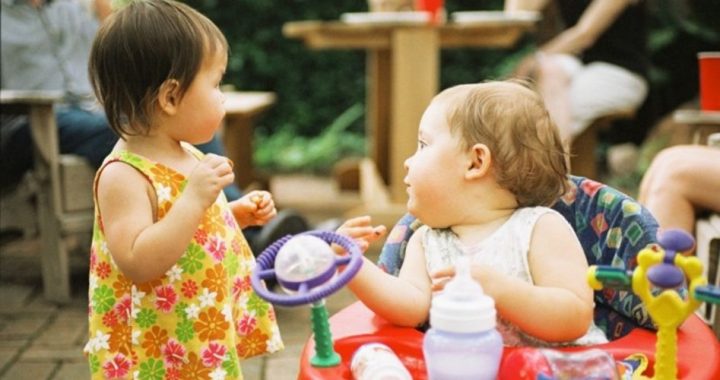
A Census Bureau report released in the past week indicated that 65 percent of American children lived in households receiving aid from one or more federal programs, as of the fall of 2011. However, an earlier census report released in September showed that the poverty rate for children under 18 declined last year for the first time since 2000. The more recent report stated:
Almost two-thirds (65 percent) of children lived in households that participated in at least one or more of the following government aid programs: Temporary Assistance for Needy Families (TANF), the Supplemental Nutrition Assistance Program (SNAP), the Special Supplemental Nutrition Program for Women, Infants, and Children (WIC), Medicaid, and the National School Lunch Program.
The full report, entitled “Nativity, and Family Transitions: 2011 (Selected Indicators of Child Well-Being)” may be viewed here.
Terence Jeffrey, who commented on the report for CNSNews.com, observed: “How to be dependent on government is now one of the earliest life lessons America is teaching nearly a supermajority of children.”
Jeffrey cited 2003 Census Bureau statistics showing that, then, of a total of 72,658,000 children 17 and under in the United States, 40,337,000 — or 56 percent — lived in households receiving aid from one of more of the federal programs listed in the latest report. In 2011, the same categories had increased to 74,294,000 children 17 and under with 47,939,000 of those — 65 percent — living in households receiving aid from one or more of these same programs.
In addition to figures showing the number of children dependent on federal aid, the census report also provided statistics related to the makeup of American families and how such family structures relate to poverty. The report stated:
Figure 1 illustrates how child poverty varied by family structure. A lower percentage of children living in a married-couple family lived below poverty (14 percent) compared to children living with two unmarried parents (37 percent) or with a single mother or father (41 percent). The economic status of children living with cohabiting parents more closely resembled single-parent families. Children living with single parents were more likely to be in poverty compared to children living with two unmarried parents (41 percent and 37 percent, respectively). Almost half of children living with two married parents lived in a family with monthly incomes at or above 300 percent of poverty.
The report also noted (under the heading: “Children’s Living Arrangements and Selected Indicators of Child Well-being,” additional benefits to children that resulted from being raised in a two-parent household, such as:
• “Children living in single parent households are read to by a family member less often than children living with two married or unmarried parents.”
• “Elementary and high school-aged children living with married parents were more likely to have television rules than children living with single parents.”
• “Ever repeating a grade was more common for high school-aged children living with two unmarried parents compared with high school aged-children living with married parents.”
In some circumstances single parents outperformed two parents not married to each other:
• “Elementary school- and high school-aged children living with a single parent were more likely to eat dinner with a parent than similarly aged children living with two unmarried parents.”
While it can be assumed that government statisticians have no vested interest in defending the traditional two-parent family or in disparaging unmarried cohabiting adults who are raising children together, the figures nevertheless support the benefits of the traditional family arrangement.
Furthermore, when a household falls below the official poverty level, the chances that it will qualify for, apply for, and receive federal benefits increase proportionately, impacting not only the household itself, but the burden on taxpayers footing the bill for all these federal programs. The traditional family not only makes good moral and cultural sense and improves the quality of life of children raised in it — it makes good economic sense, as well.
One might assume that since the percentage of children living in households receiving federal aid increased from 56 percent in 2003 to 65 percent in 2011, that more children must be living in poverty. However, a New York Times article on September 16 cited a Census Bureau report released that day showing that the poverty rate for children under 18 declined in 2013 for the first time since 2000. The bureau reported that the number of children in poverty fell by 1.4 million, to 14.7 million. The bureau also reported that 14.5 percent of Americans of all ages were living in poverty in 2013, down from 15 percent in 2012.
The Times quoted this statement from Representative Paul Ryan (R-Wis.), chairman of the House Budget Committee and the GOP’s 2012 vice presidential nominee: “If this report tells us anything, it’s that we can do better. The status quo simply isn’t good enough.”
Ryan, who was generally regarded as the more conservative member of the Romney-Ryan ticket (he scored 70 percent on The New American’s “Freedom Index”) did not specify exactly what he meant by “we can do better.” One clue is the poverty plan he unveiled in July, as reported by the Wisconsin State Journal, which described it:
Ryan wants to let the states voluntarily try new approaches to helping the poor, with careful analysis of results by a neutral third party. Those states and their providers who improved outcomes would get more money, not less. The goal, Ryan says, is to streamline services in a comprehensive yet flexible way.
While Ryan’s proposal to move more responsibility for helping the poor from Washington to the states may be a step in the right direction, if such improved efficiency results in the states getting more anti-poverty money from Washington, it is still troublesome to constitutionalists. First, when the federal government sends money to the states, it inevitably controls what it finances. Second, there is no provision in the Constitution for the federal government to be involved in fighting poverty or any other social problem. Such social maladies are best cured by private charities or, if government is involved at all, only at the local level.
The principle that the federal government should not exceed its constitutional mandate even for purposes that seem charitable or worthwhile is well told in the story about Congressman Davy Crockett and the lesson he learned from a constitutionalist constituent. To read this story and learn an important lesson on the difference between charity and unconstitutional government largesse, read this article: Davy Crockett and the U.S. Constitution.
Related articles:



